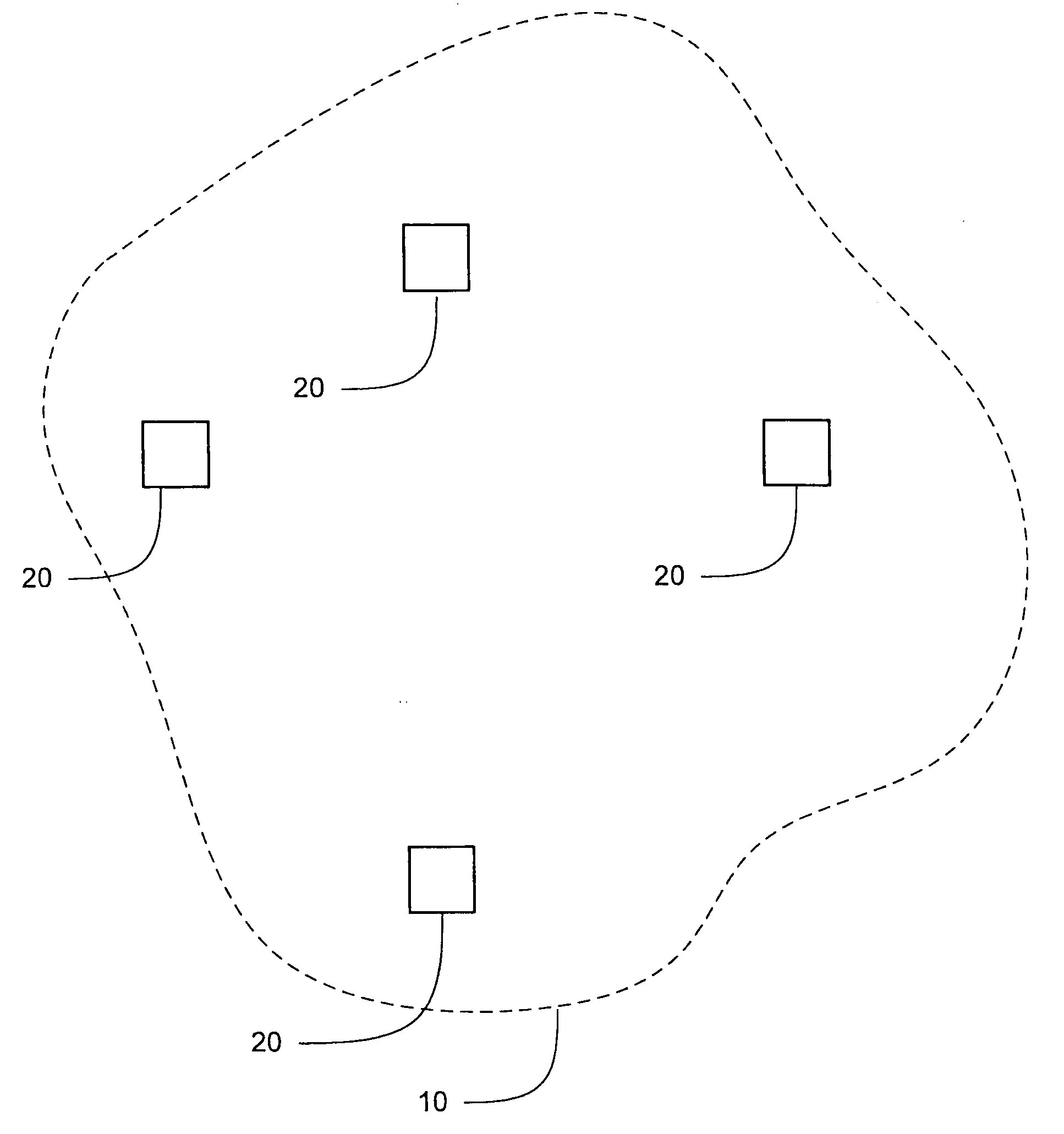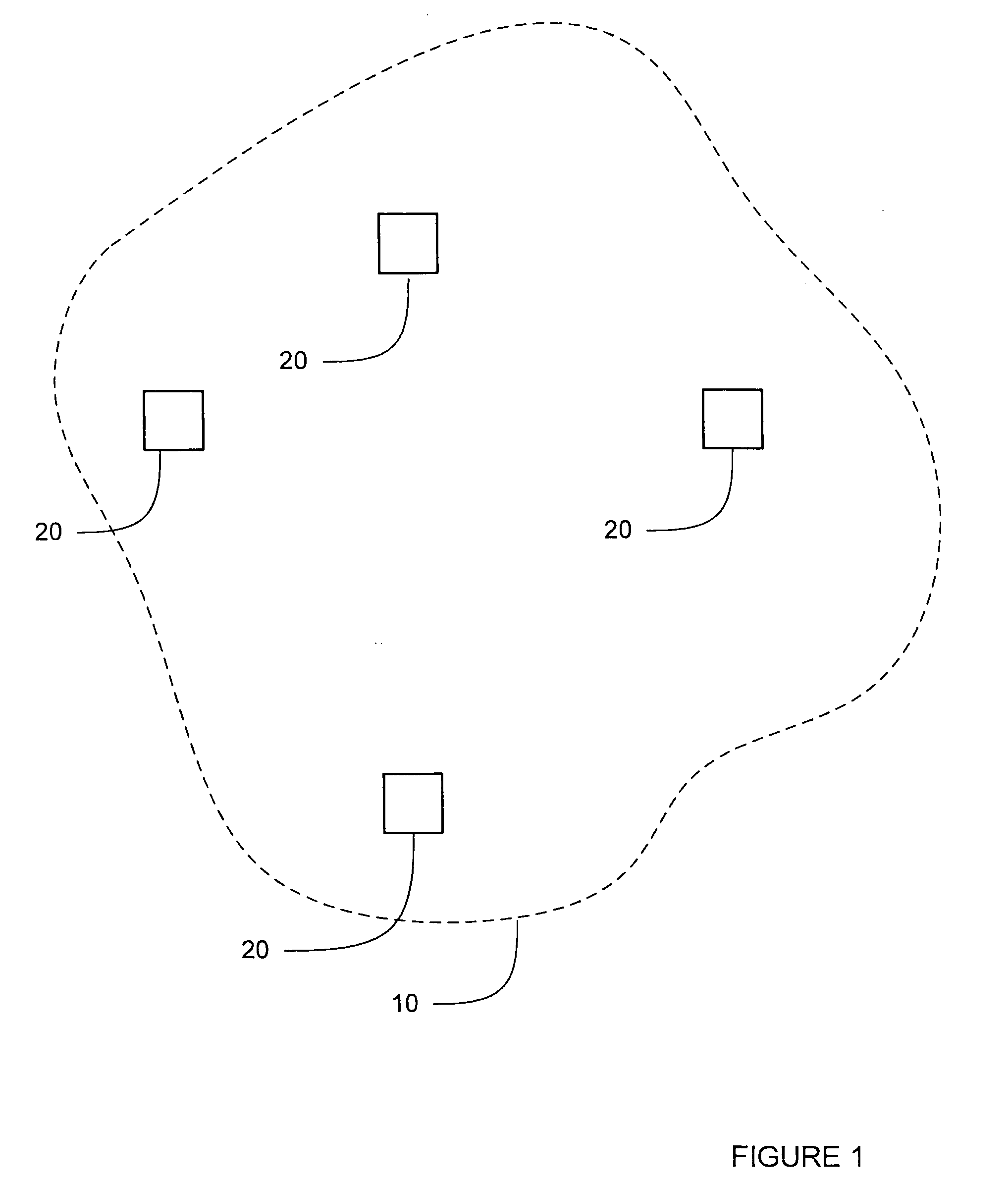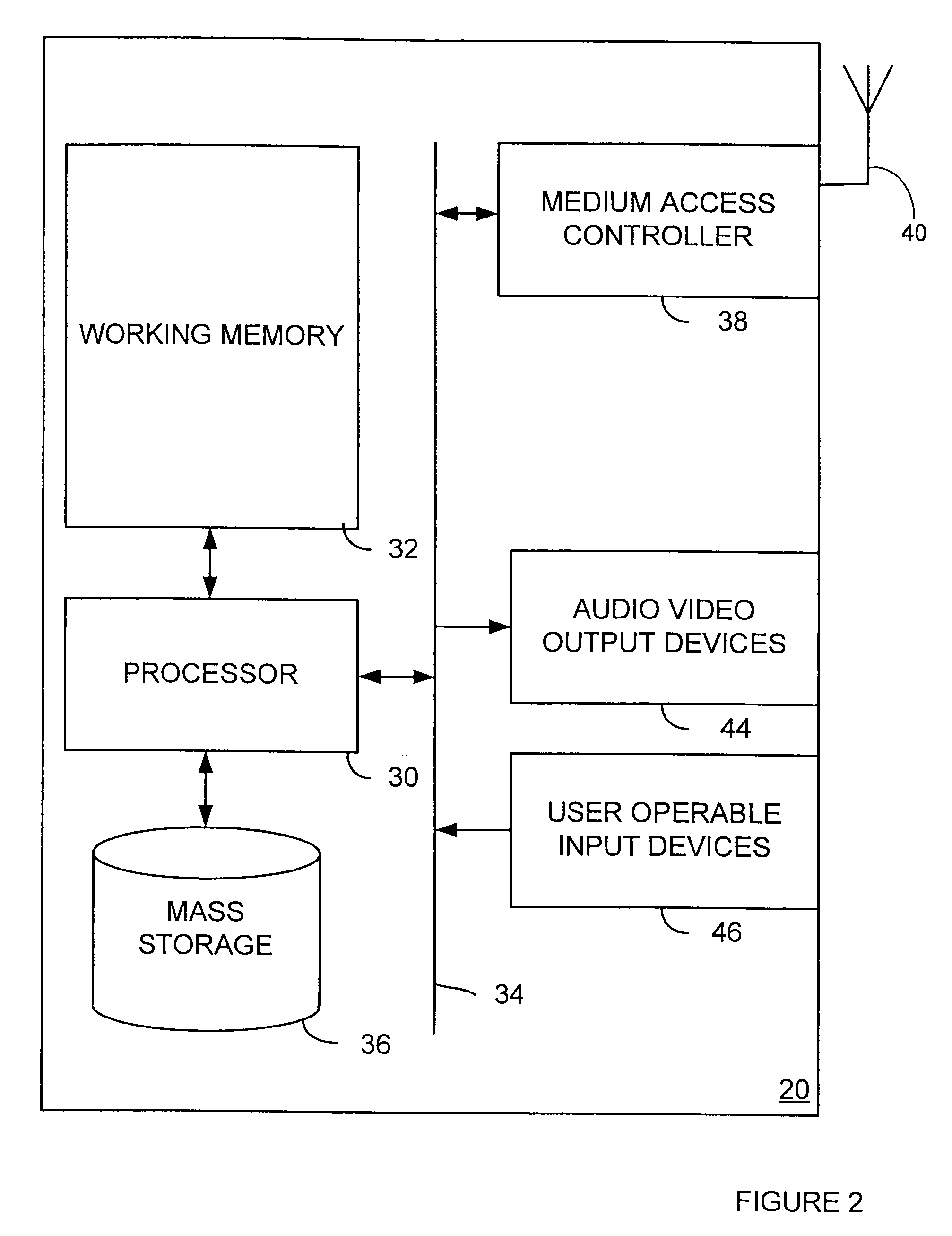Wireless communications method and apparatus
a communication channel and wireless communication technology, applied in the field of wireless communication methods and apparatus, can solve the problems of high cumulative consumption of battery power, relatively tight regulation, and easy degradation of channels in every channel
- Summary
- Abstract
- Description
- Claims
- Application Information
AI Technical Summary
Benefits of technology
Problems solved by technology
Method used
Image
Examples
Embodiment Construction
[0045]Specific embodiments of the present invention will be described in further detail on the basis of the attached diagrams. It will be appreciated that this is by way of example only, and should not be viewed as presenting any limitation on the scope of protection sought.
[0046]In the described embodiment, certain assumptions are established.
[0047]Firstly, all nodes in the secondary network communicate in a single vacant channel using any access mechanism, for example CSMA (Carrier Sense Multiple Access). It is known in the art that CSMA is a probabilistic Media Access Control (MAC) protocol in which a node verifies the absence of other traffic before transmitting on a shared transmission medium, such as a frequency spectrum.
[0048]Secondly, the primary detection is based on SINR (Signal to Interference plus Noise Ratio) threshold, as an example. However, it will be appreciated by the reader that there exist many other methods that can replace this approach.
[0049]Thirdly, the embod...
PUM
 Login to View More
Login to View More Abstract
Description
Claims
Application Information
 Login to View More
Login to View More - R&D
- Intellectual Property
- Life Sciences
- Materials
- Tech Scout
- Unparalleled Data Quality
- Higher Quality Content
- 60% Fewer Hallucinations
Browse by: Latest US Patents, China's latest patents, Technical Efficacy Thesaurus, Application Domain, Technology Topic, Popular Technical Reports.
© 2025 PatSnap. All rights reserved.Legal|Privacy policy|Modern Slavery Act Transparency Statement|Sitemap|About US| Contact US: help@patsnap.com



